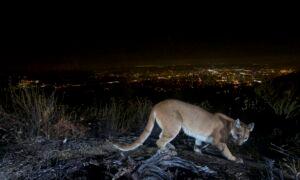For the first time in decades, a colony of beavers has made a home in the South Fork Tule River watershed after the animals’ release in June by the Tule River Tribe and state wildlife officials.
The new location for the seven beavers is on the Tule River Indian Reservation in the Southern Sierra Nevada, about 100 miles southeast of Fresno in Central California.
Beavers had roamed the surrounding area starting 1,000 years ago, according to the California Department of Fish and Wildlife. Beaver pictographs can be seen at the Painted Rock next to the South Fork Tule River on the 55,000-acre reservation, but the creatures haven’t been seen on the land for decades.
Human exploitation and eradication efforts have reduced the U.S. beaver population from about 200 million to 10 million to 15 million, according to state wildlife officials.
The initial release included three adult beavers, one slightly younger beaver, and three babies, called kits.
Two more beavers were released into Miner Creek on the Tule River reservation on June 17.
“I’m very happy to see [the beavers] come home and it’s going to be wonderful to watch them do their thing,” Kenneth McDarment, a Tule River Tribe member and past tribal councilman, said in a statement on June 21. “People will be educated even more by seeing the work that they do and the benefits they bring to the environment.”
Tribal leaders started to advocate for the return of beavers 10 years ago, according to state officials. State funding in 2022 launched the department’s beaver restoration program and created a way for the tribe to reintroduce beavers into the river.

Mr. McDarment said he hoped to see the beavers throughout the reservation someday.
The state will likely release more beavers in coming months and years in order to reestablish a genetically diverse population in the watershed, according to a June 21 statement from the state Department of Fish and Wildlife.
“We can make our future different from our past,” Charlton Bonham, the department’s director, said in the statement. “Our past is one where we treated these animals and others as varmints, as nuisances, and our culture over time ran them off the landscape. That can’t be our future.”
State wildlife biologists stayed on the Tule River site for days after the releases to monitor the beavers’ behavior, according to the department. The state’s field team reported that the colony of beavers stayed together at the release site on Eagle Creek.
As the largest rodents in North America, the semi-aquatic animals are super swimmers, using their large webbed feet to swim. They also gnaw on aspen and willow trees to build dams on rivers as they create ponds where they can build beaver lodges to live in.
The state Department of Fish and Wildlife operates a beaver management program with tribes, non-governmental organizations, private landowners, and other state, federal, and local agencies.
The program responds to conservation needs and human–beaver conflicts, according to the department’s website. The department also provides funding to partners who conduct projects to restore the state’s beaver population.







